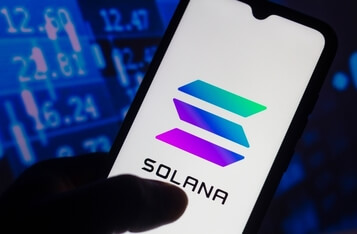Five Ways Blockchain Technology is Transforming the Automotive Industry
Blockchain, as a secure and unique sort of encryption, has the potential to be one among the critical technologies that make it possible for the automotive industry to breakthrough into the new era of smart vehicles.


Blockchain, a technology knwon for its application in cryptocurrencies like Bitcoin, has been explored by automakers to enhance security in increasingly connected vehicles. As the average car gets closer to being fully connected, electric, and/or autonomous, there'll be a corresponding increase within the need for a more evolved database to match – and blockchain is shaping up to be the solution.
Blockchains are secure databases intentionally, making them excellent prospects for recording things like medical records, financial transactions, identity management, and proving provenance. Blockchain offers the potential of removing the middleman in trade and transaction processing. Here are 5 ways blockchain has become a disruptor and driver of adoption within the automotive industry.
1. Secure payment, in-vehicle
Blockchain first landed within the public consciousness because the technology supporting cryptocurrencies, like Bitcoin; cryptocurrency remains the first arena during which blockchain technology is employed. Car owners soon, however, could use blockchain to buy the electricity to charge electric cars. Imagine if whenever you charged your vehicle, the action triggered a sensible contract on the blockchain that took the acceptable amount of cash from your account and sent it to the charging station. an equivalent could choose your monthly parking cost, your insurance, and the other financial transactions involving your vehicle.
2. Safe-guarded Autonomous Data
As a self-driving vehicle navigates the planet, the blockchain could become liable for recording data about the small print related to the trip. This localization data could include everything from information about road and infrastructure details to general traffic patterns. Other vehicles within the network could then access this information and trust that, since it's been processed through blockchain technology, it's accurate and secure (the arrangement of shared ledgers in blockchains makes adding to, removing, or altering data nearly impossible once it's been validated and stored during a block). Since sharing everyone else’s data is that the fastest path to autonomous driving, automakers may soon leverage blockchain to share all the localization data as securely as possible. Only authorized parties would be ready to access this data in real-time because it's cryptographically secure. Hacking is business and not a threat to individuals the maximum amount because it is to OEMs. Blockchain usage will prevent “bad actors” from hacking the network and potentially holding OEMs hostage as a result of a display of what is often done to the automaker’s autonomous vehicle network.
3. Ridesharing Decentralized
Ride-hailing services like Lyft and Uber are already reinventing the way we use — or don’t use — our vehicles. With a couple of swipes on an app, a driver picks you up in their car and takes you to your destination. Blockchain, alongside autonomous technology, could take ridesharing to the subsequent level within the not-too-distant future.
One aim of blockchain is to get rid of intermediaries between rider and driver while establishing safer maintenance of knowledge. By basing payment on predetermined conditions and installing them during a smart contract, for instance, drivers will get paid only they need to be delivered a rider to their destination. If a rider cancels, the contract could release a little portion of the funds to the driving force to account for his or her time rather than an arbitrary cancellation fee.
The possibility is even there for blockchain technology to disrupt the way companies as Uber operate. By transferring the processes of payment and driver/rider selection to the target, secure blockchain, an ecosystem-type platform might be built as a remedy to get rid of the middleman. Riders could connect directly with drivers on such a platform, viewing individual reputations and selecting a driver supported price, quality, and other free-market factors. it might be a welcome alternative for several drivers uninterested with the present ridesharing pay structure related to companies like Uber.
4. Fair and Reliable Car Sharing
Blockchain-based frameworks encourage the sharing of rides as well as vehicle proprietorship. for instance, within the future, a gaggle of individuals may share ownership of vehicles — rather than everyone living during a high rise owning their car or counting on other modes of transportation, they might share a fleet of 10 vehicles. They’d request access to a vehicle once they needed it via an app, and through use, the cars’ blockchain would record the activity of every vehicle.
The system would automatically settle payments on whatever basis the owners agree upon, and therefore the secure nature of blockchain would take the guesswork out of exactly how long, far, and fast vehicles are used for – ultimately creating more convenience for all.
5. Supply Chain Management
In the automotive industry, the transparency offered by distributed ledgers could help make sure that manufacturing, shipping, and suppliers see an equivalent supply chain, making it nearly impossible for the insertion of counterfeit parts. Furthermore, multiple blockchains might be put into use to manage the mass amounts of knowledge generated and monitored by automotive manufacturers and suppliers daily: one blockchain might contain bills of replenishing for vehicle segments, another could contain quality-review records made during the assembling procedure, and another could store WIP data for each vehicle get together from beginning to end.
Furthermore, savvy agreements may be installed in assembling blockchains to consequently discharge buy orders at specific periods of the assembling procedure. Supply chains may benefit from contracts being automatically awarded to the supplier with the most important inventory available.
Image via ShutterstockImage source: Shutterstock


.jpg)
